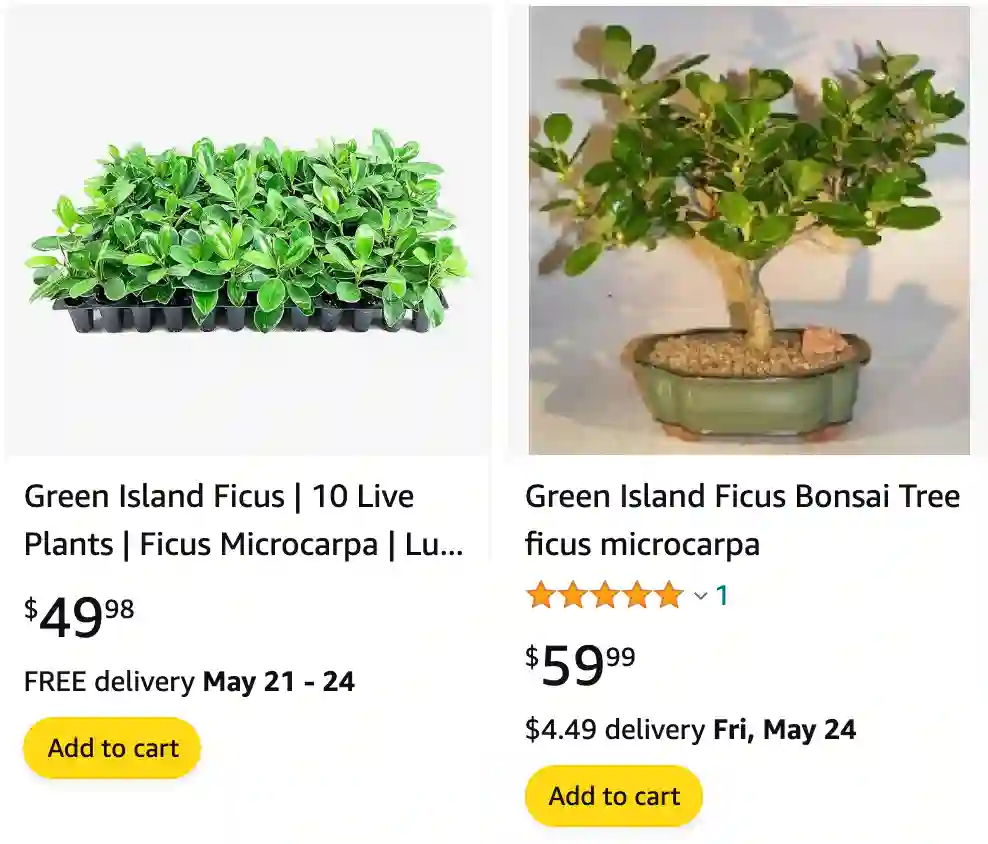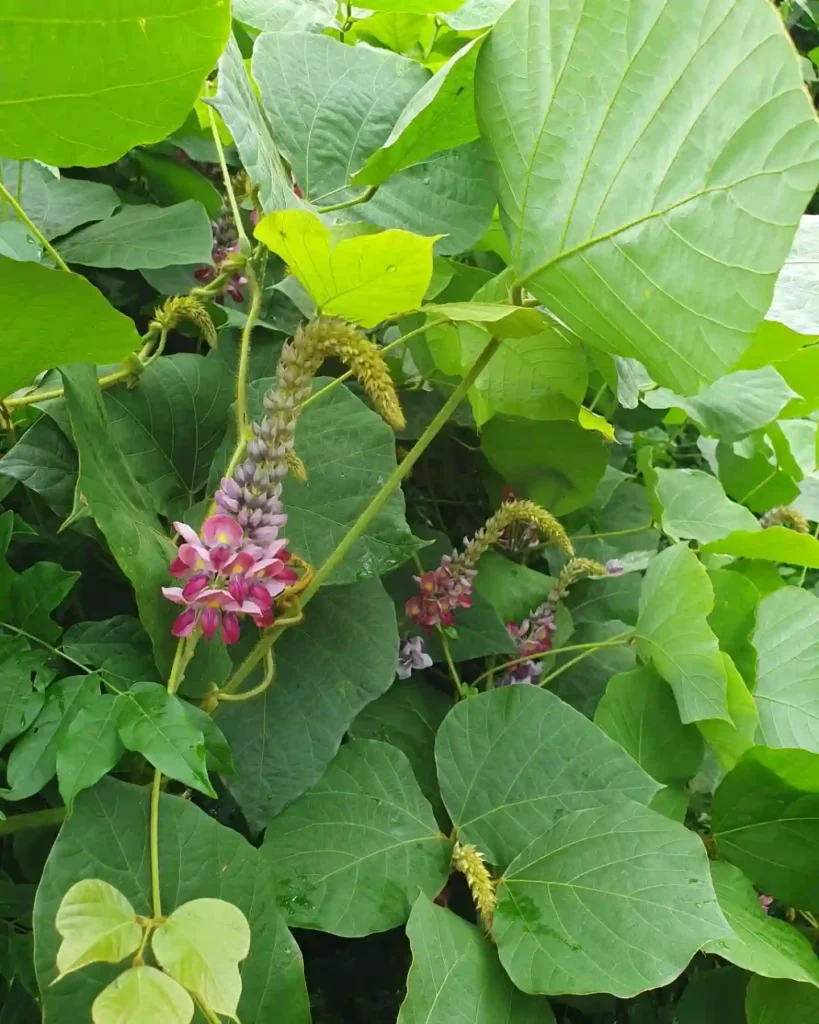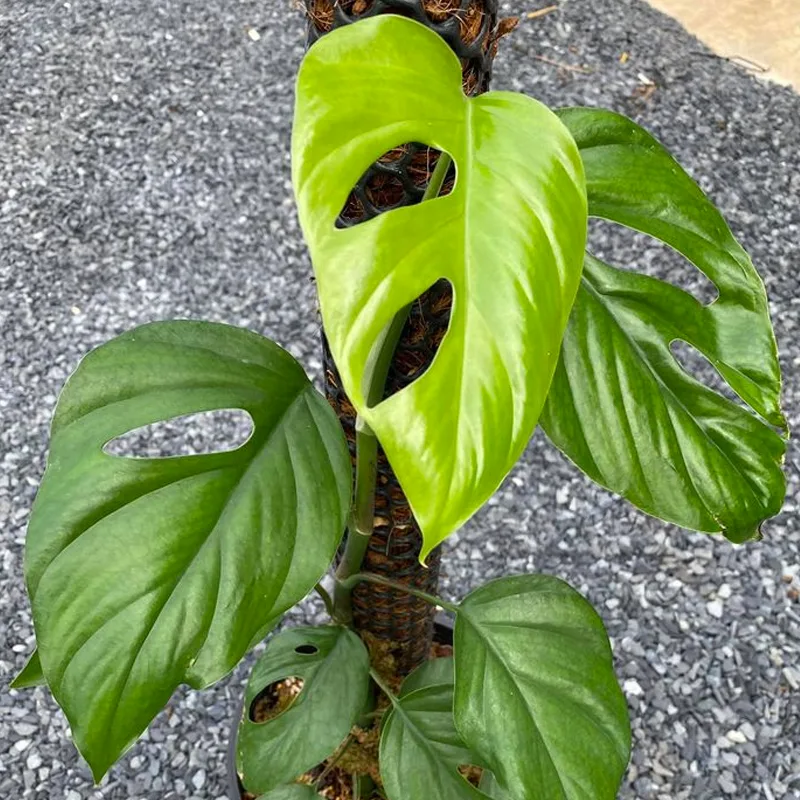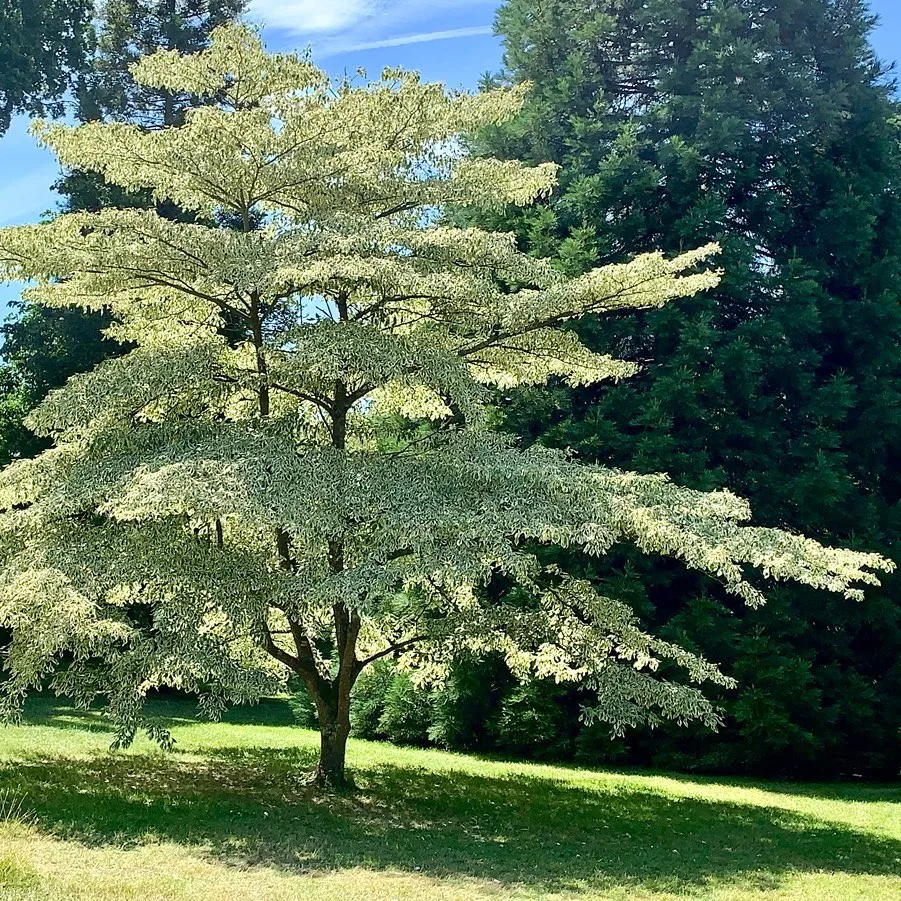
Ficus nitida vs Ficus microcarpa
Both these fiddle leaf figs are stunning, but for me, the nitida wins for sheer leaf size. Ficus microcarpa‘s leaves, while beautiful, feel a bit on the small side. Nitida makes a bolder statement, its giant emerald leaves catching the light and creating a dramatic presence in my living room.
Ficus nitida vs Indian laurel
This might surprise some, but I actually prefer the nitida over the Indian laurel. The laurel, while a lovely, low-maintenance option, has smaller, less dramatic leaves. The nitida feels more luxurious, its glossy surface reflecting the sunlight and adding a touch of glamour to my space.
Ficus nitida vs Brush cherry
This isn’t even a close call for me. The brush cherry, while pretty in its own way, just doesn’t have the same presence as the nitida. Its leaves are smaller and a paler green, lacking the rich vibrancy of the fiddle leaf fig. Plus, the nitida seems to tolerate my forgetful watering schedule a bit better.
Ficus nitida vs Ficus benjamina
This is a tough one. I love the weeping fig’s cascading branches, but the nitida’s architectural form just speaks to me more. The nitida grows nice and tall with a beautiful, straight trunk, making it a focal point in any room. Ficus benjamina, while elegant, can get a bit leggy and requires more frequent pruning to maintain its shape.
880 Species in Genus Ficus
How fast does Ficus nitida grow?
Ficus nitida, commonly known as Indian laurel fig or Cuban laurel, is known for its rapid growth rate. Under optimal conditions, it can grow several feet per year.
How tall does a Ficus nitida grow?
Ficus nitida can grow quite tall, reaching heights of up to 50 feet or more when mature. However, its height can be controlled through pruning and regular maintenance.
How to plant Ficus nitida?
Here’s a guide to planting your Ficus nitida:
Choosing a Location:
- Sunlight: Ficus nitida prefers full sun to partial shade.
- Full sun: Ideal for most climates, promoting good growth and a dense canopy. However, afternoon shade can be beneficial in very hot climates to prevent scorching of the leaves, especially for young trees.
- Partial shade: Can be tolerated, but the tree might grow leggier and have a less dense canopy.
- Soil: Ficus nitida prefers well-draining soil.
- If your soil is heavy clay, amending it with compost or other organic matter, or planting in raised beds, can improve drainage.
Planting:
- Dig a hole: Dig a hole that is 2-3 times wider and deeper than the root ball of your Ficus nitida.
- Loosen the soil: Loosen the soil around the edges of the hole to encourage root growth.
- Amend the soil (if necessary): If your soil is not well-drained, mix some compost, peat moss, or other organic matter into the soil you dug out of the hole.
- Position the plant: Carefully remove the plant from its container and gently place it in the center of the hole. Ensure the root crown (the area where the stem meets the roots) sits slightly above the surrounding soil level.
- Backfill the hole: Fill the hole back in with the amended soil mixture, gently tamping it down to remove air pockets.
- Water thoroughly: Water the plant deeply to settle the soil around the roots and ensure proper hydration.
Aftercare:
- Watering: Water your Ficus nitida regularly, especially during the first growing season and during hot, dry spells. The soil should be consistently moist but not soggy. Here’s a simple way to check moisture: Stick your finger into the top inch of soil. If it feels dry to the touch, it’s time to water.
- Mulching: Apply a layer of mulch (around 2-3 inches deep) around the base of the plant to retain moisture, regulate soil temperature, suppress weeds, and protect the roots from extreme temperatures. Use mulch like shredded bark, pine needles, or wood chips.
- Fertilizing: You may not need to fertilize frequently, especially if your soil is rich in nutrients. However, a balanced fertilizer formulated for trees and shrubs applied in early spring can be beneficial. Follow the package instructions for dosage and application.
- Pruning: Routine pruning is not necessary but can be done to maintain size and shape, or to remove dead, diseased, or damaged branches. Prune lightly after new growth has matured, using sharp, sterilized pruning shears.
Additional Tips:
- Ficus nitida is generally pest and disease resistant, but watch out for common garden problems like mealybugs or scales. Insecticidal soap or neem oil solution can be used for control if needed.
- Ficus nitida has aggressive roots. Be mindful of planting it too close to structures or walkways where root growth might cause damage.
- Enjoy the dense, glossy green foliage of your Ficus nitida! This tree can be a great choice for privacy hedges, screens, or as a specimen tree in your garden.
How far apart to plant Ficus nitida?
When planting multiple Ficus nitida trees, space them at least 10 to 15 feet apart to allow ample room for growth and to prevent overcrowding as they mature.
Are Ficus nitida good around pools?
Ficus nitida can be suitable around pools due to their dense foliage, which provides privacy and shade. However, their invasive root system may pose a risk to pool structures, so careful consideration and maintenance are necessary.
Are Ficus nitida poisonous to dogs?
While Ficus nitida is not listed as toxic to dogs by the American Society for the Prevention of Cruelty to Animals (ASPCA), ingestion of its leaves or sap may still cause gastrointestinal upset in pets. It’s best to prevent pets from consuming any parts of the plant.
Are Ficus nitida roots invasive?
Yes, Ficus nitida has an aggressive and invasive root system, which can potentially damage sidewalks, driveways, and other nearby structures if not managed properly.
Do Ficus nitida trees shed?
Ficus nitida trees may shed leaves periodically, especially in response to stressors such as changes in temperature or environmental conditions. Regular maintenance, including pruning and proper watering, can help minimize shedding.
How much do Ficus nitida cost?
The cost of Ficus nitida trees can vary depending on factors such as size, location, and supplier. Generally, smaller specimens or saplings may be more affordable, while larger, more mature trees can be relatively expensive. It’s advisable to check with local nurseries or garden centers for pricing information specific to your area.
If i die, water my plants!



